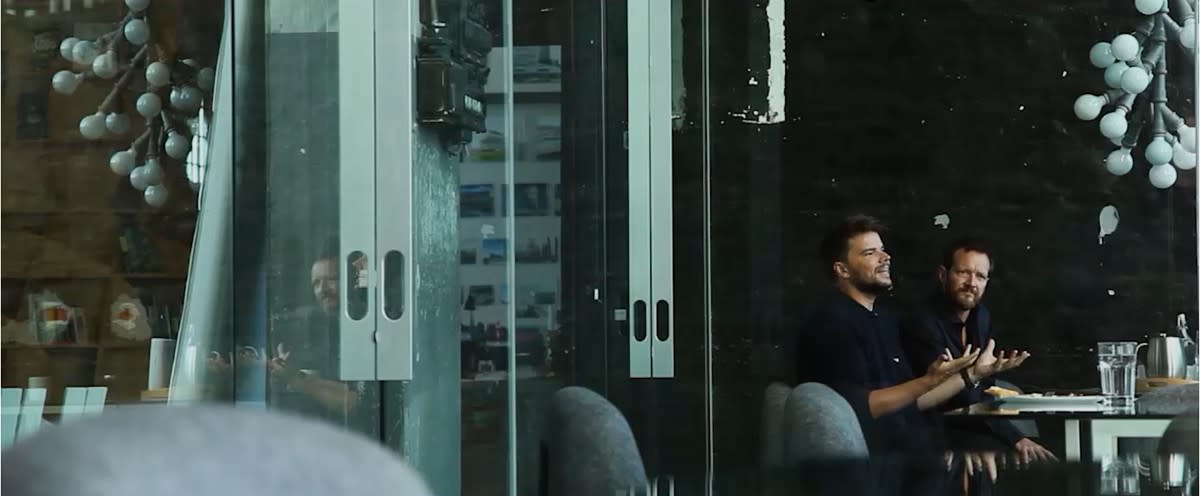Yes is More for Bjarke Ingels

Welcome to Part Five of Scott Dadich talks about leaving Wired, starting his own design firm, and creating the Netflix series Abstract: The Art of Design.
The series for me is about illuminating the fact that designers touch nearly every aspect of human life, and our interactions with one another, our experiences, our travels, our communications, our lives are intertwined with designers in ways I think that most people will find surprising. And we hoped that Abstract revealed those connections and the intentionality behind design decision making.
I sure hope so. When I was coming up, I didn’t know that design could be a profession. It wasn’t until I was well along in University that I discovered that design could be a career path, so I definitely hope that young people will take some time with the series and will maybe find a passion and a calling that they didn’t know existed.
We wanted Abstract to be very energetic and alive and present, and represent accurately how design happens, and how it’s often a really messy, collaborative, failure-filled process. Design doesn’t always work, and that notion of design as coffee table book is interesting to think about in the abstract–lowercase ‘a’ abstract. Design and creativity is a participant sport, it’s hands-on, and we really tried to design filmmaking techniques that would support that thesis. Morgan (Neville), Dave (O’Connor) and myself, we really worked with our directors to make sure that the energy and enthusiasm and actual color from the design process made its way into the picture.

“Over the last fifteen years we’ve completed twelve or thirteen buildings. But right now we have seventeen construction sites… In our work, Yes is More. We try to come up with this inclusive approach to architecture, or getting everybody’s input to the extreme, where suddenly it becomes the driving force.”
Bjarke Ingels
Bjarke is a transformative figure in the world of architecture, number one because of how prolific he has been at such a young age. Architects of his stature don’t get to the level of import and recognition that Bjarke has achieved until typically much later in their careers. For Bjarke to be a 42-year-old man and have dozens of billions of dollars of construction in more than twenty sites around the world is really unheard of.
Yeah. Bjarke and I have had a personal relationship that spans just about ten years. We actually connected many years ago and formed a bond and relationship over our shared love of Wired, and in reporting and telling stories about his work on various occasions during my career at Wired, we came to be close friends, and I had a sort of up-front and personal seat to some of the work that he was doing. So it was very clear that we’d have a rich vein of story there.
Yeah, and inventive building styles and a certain swagger that he has in his ability to communicate his intent and his ideas. He’s done things in ways that aren’t always traditional, in both selling and talking about his work.

“We’re not gonna stop until we have incorporated every single concern, no matter how small. This is obsession with making everybody happy becomes a recipe for making something that is really extraordinary, because it has to perform in so many different ways.”
Bjarke Ingels
Yes. He’s always been incredibly ambitious. He’s a brilliant guy. We were even talking about a potential project together where we could join forces: my design and storytelling background, and his practice as an architect; the project never ended up working out, but we formed a friendship that has lasted to this day.
He’s working on 2World Trade (pictures as the main image of this article), and he’s working on the Google headquarters, the Big U, the storm shelter in lower Manhattan; also the Smithsonian…
Oh definitely. When you are lucky enough to meet people who do design on a really impressive scale–whether that’s buildings, feature films like my friend Jeff Nichols, or restaurateur and chef like David Chang–experiencing that on a personal scale is always very gratifying and inspiring to me. And that’s no different to when I go into Bjarke’s buildings.
Push out of the lifeboat? (laughter)
There’s no way.

“In the big picture, architecture is the art and science of creating the framework of our lives. And the buildings that we built, they either open possibilities or they hinder encounters or connections.”
Bjarke Ingels
I would jump out myself before I pushed anyone out. Those eight need to stay.
What this was really about for both me and Patrick was being able to say yes to more opportunities.
We have had a terrific outreach ever since the announcement. The inquiries started even before we announced; I’ve had conversations with friends and people that I’ve covered and people that I’ve wanted to work with for years, and that’s one the great gifts of being in charge at Wired: you meet truly incredible people around the world all of the time. And you invariably form these bonds and friendships and inspiration arise in the form of that question: what could we do together? Is there a project that we could take on together? It would be fun to collaborate. And that invariably leads to that next question: what is that going to be and how can we make that real? And really, for Patrick and I the chance to that at scale and to be choosey, and to say no to certain things so that we could say yes to projects that felt gratifying to us was part of the calculus.
Well, it requires a vast amount of research and being well-read and well-connected in both this community but also the global community of business and technology; and understanding the way that the world is changing, which makes my training at Wired very helpful.
Yeah, I’ve now had my second day of coming in full-time at the new office. But I’m actually walking, which is really great; it’s walking distance from my apartment down in South of Market.
(Laughter) It was a lot like that.
Yeah, my team threw the most incredible party and toast, and they made some good fun of me, which was well-deserved. And I actually did have the cardboard box. After eleven years, though, it was more than just one, and all of my issues and all of the magazines I worked on got packed up too.
I actually haven’t had a day off since Christmas day. But it’s incredibly exciting, and I’m actually leaping out of bed each day because there’s just so much possibility.
It really is.